Siem Reap
I had a 4-week Indochina trip in May-June 2007.
(Melbourne – Bangkok – Thailand – Laos - Vietnam - Cambodia -Thailand – Bangkok - Melbourne)
After 2 nights in Phnom Penh we flew to Siem Reap.
The 40 minute flight from Phnom Penh to Siem Reap flew over Tonle Sap Lake on the way.
Today, Siem Reap is undoubtedly Cambodia's fastest growing city and serves as
a small charming gateway town to the world famous heritage the Angkor temples.
The name Siem Reap means the 'Defeat of Siam' - today’s Thailand - and refers to a centuries-old
bloodbath commemorated in stone in the celebrated bas relief carvings of the monuments.
In
1901 the École
Française d'Extrême Orient (EFEO)
began a long association
with Angkor by funding an expedition to the Bayon.
In 1907 Angkor, which had been under Thai control, was returned to
Cambodia
and the EFEO took responsibility for clearing and restoring the whole
site.
In the same year, the first tourists arrived in Angkor - an
unprecedented 200 of them in three months.
Angkor had been 'rescued' from the jungle and was assuming its place in
the modern world.
The
Khmer Empire once included much of modern-day Thailand, but there's a
touch of irony about the name
given that Thailand ultimately defeated Cambodia, and controlled Siem
Reap and Angkor from 1794 to 1907.
Would
you fly with this airline?

The
lovely Cambodian styled airport terminal buildings at Siem Reap
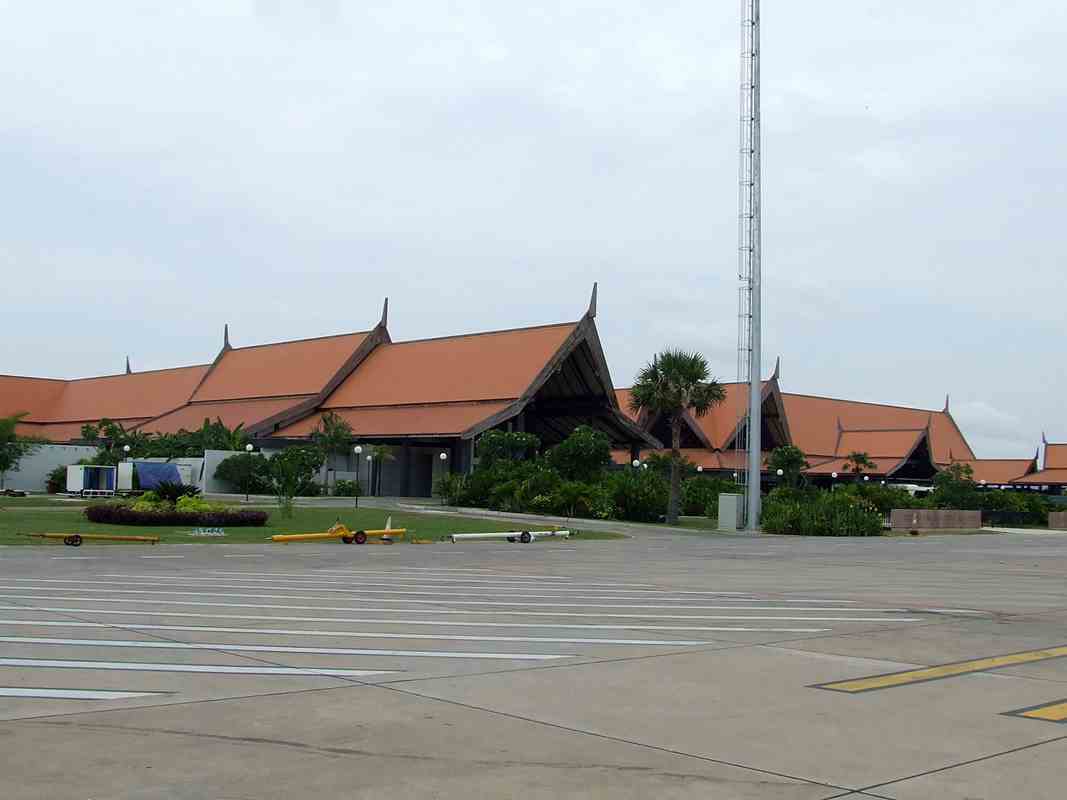
The
decorated plane, a French built ATR-72-500, on which we flew into Siem
Reap.
Interestingly, passengers are boarded using the rear door as
the front door is used to load cargo.
A tail stand must be installed when passengers are boarding
or
disembarking to prevent the nose from coming off the ground.
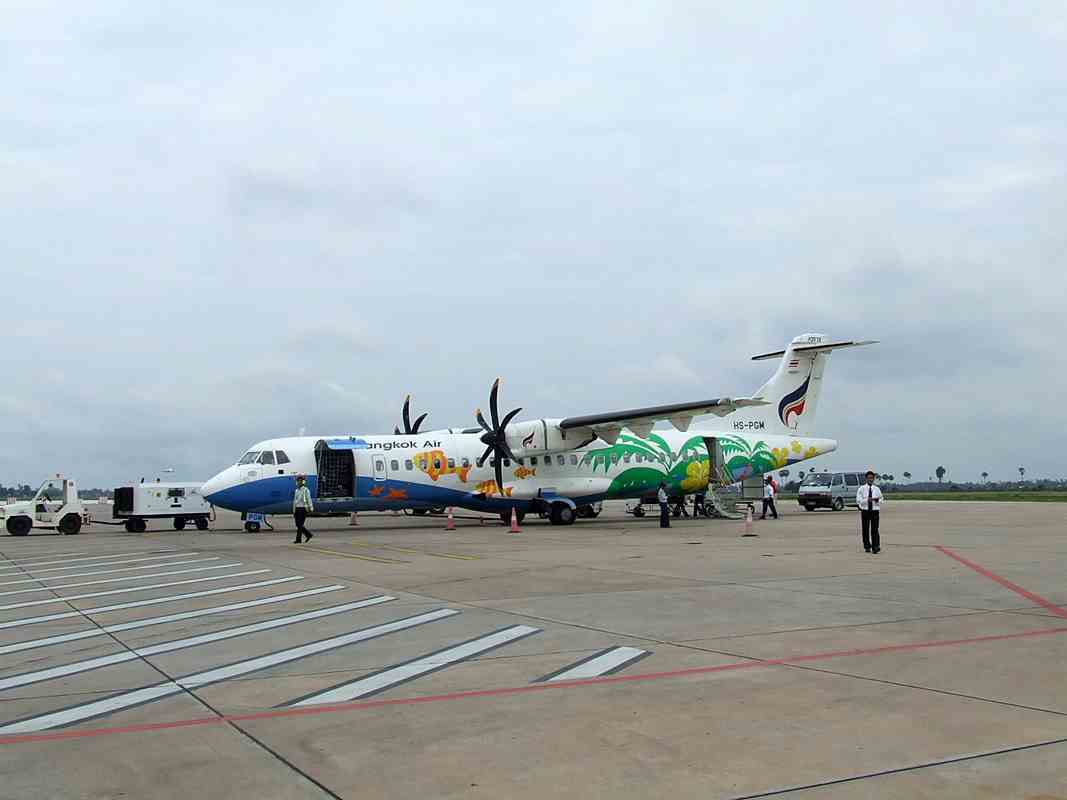
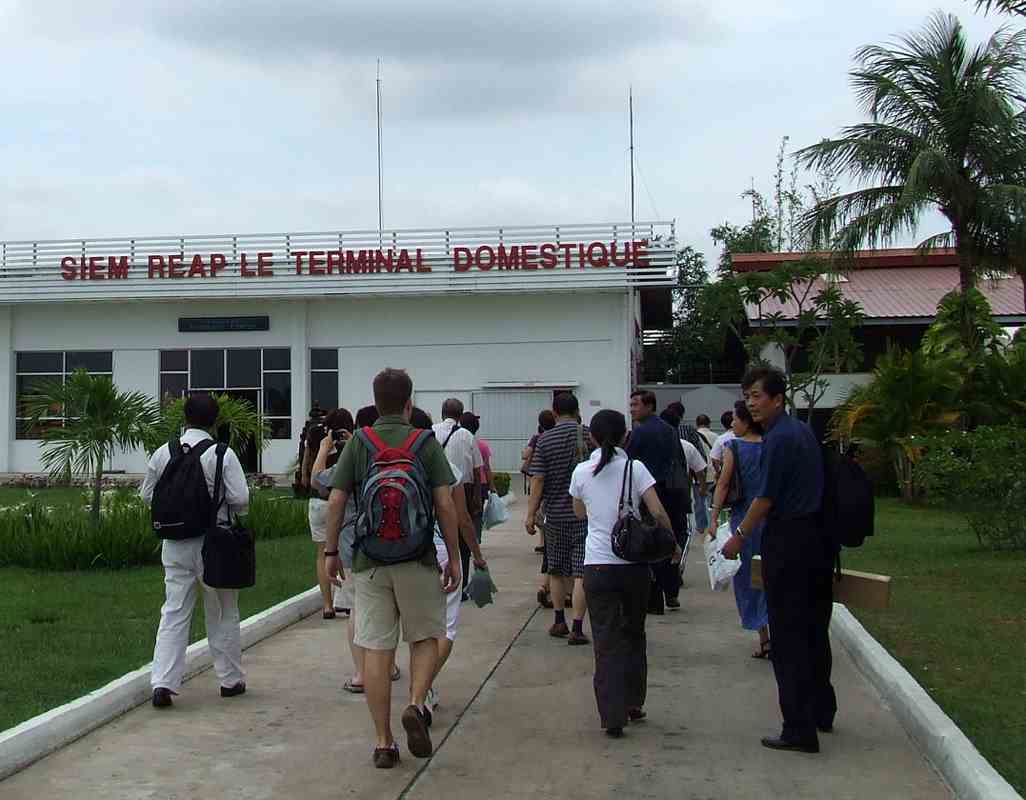
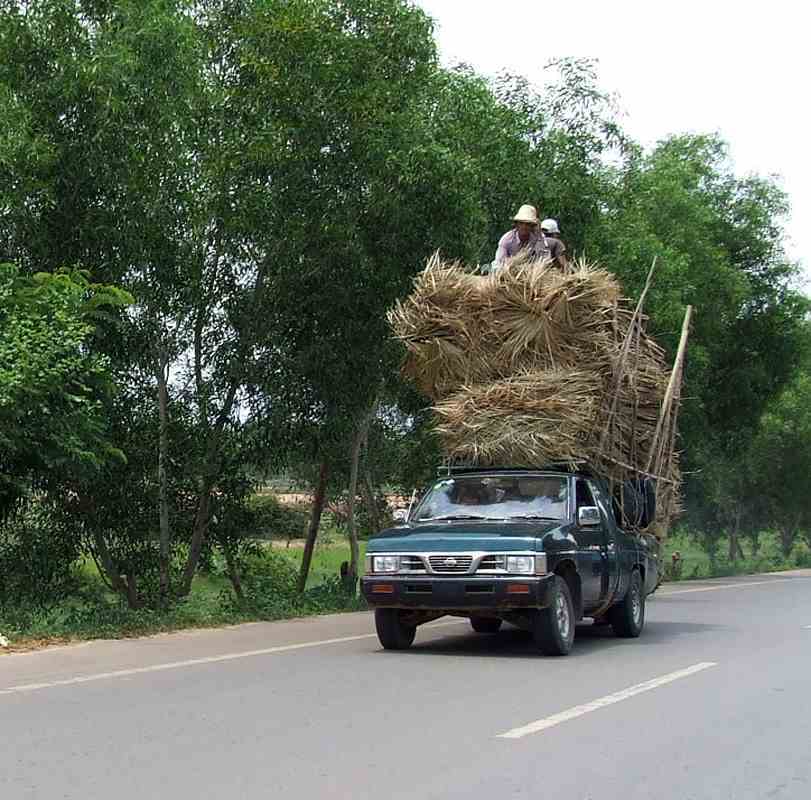
Yes,
it a pig. We saw a number of them like this, on our trips to
the ruins.
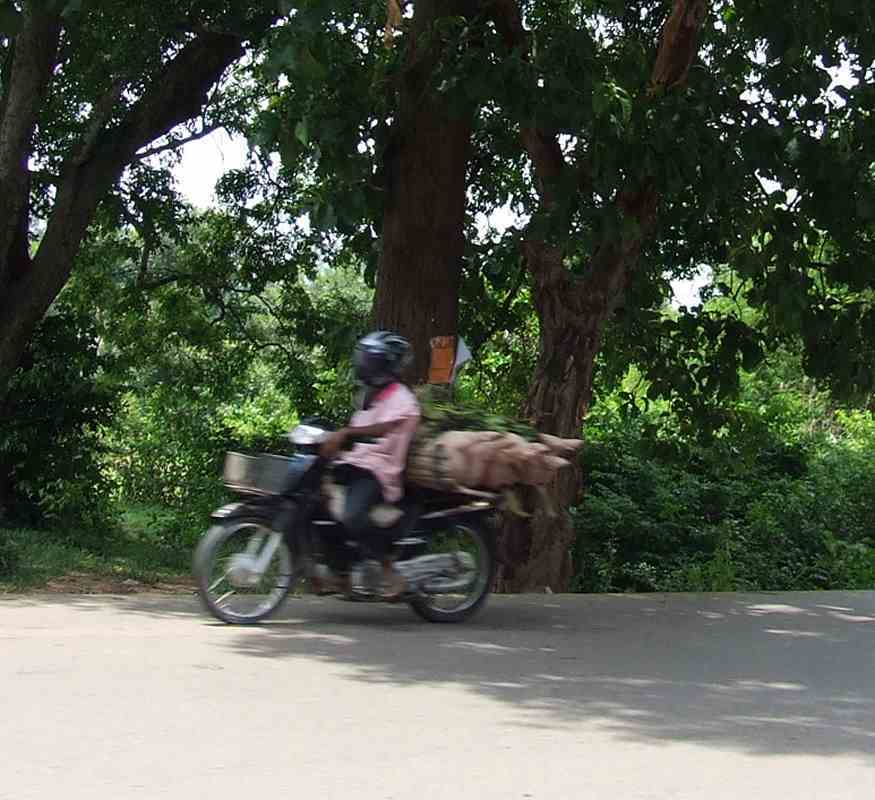
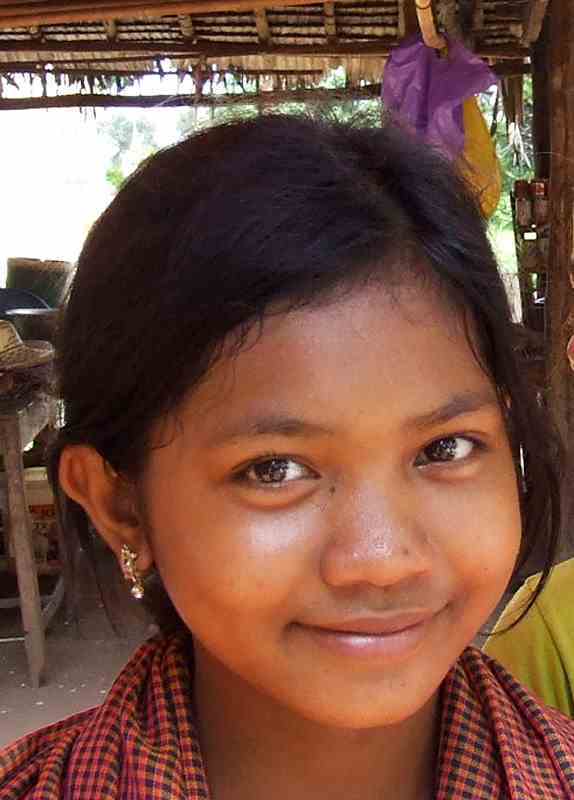
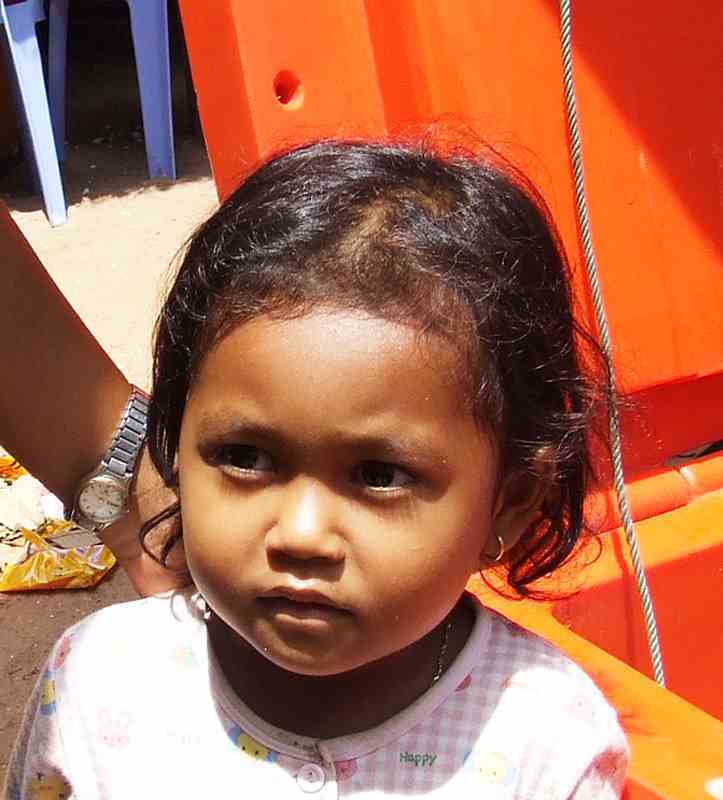

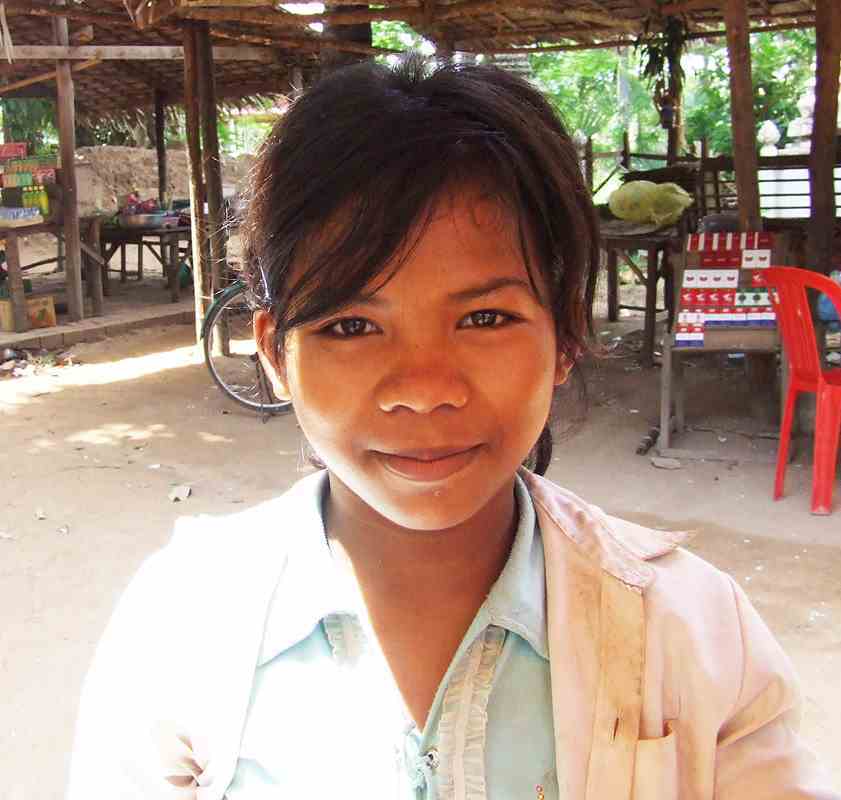
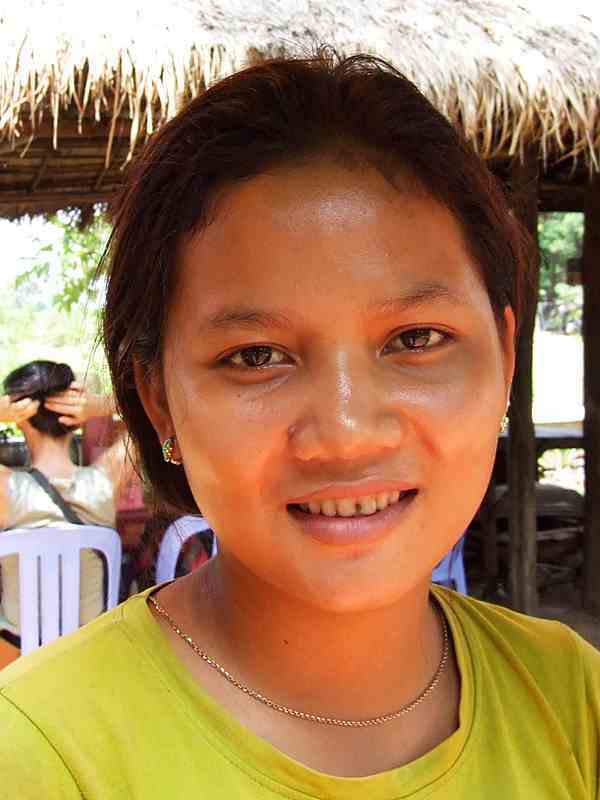
Tonle Sap Lake is interesting.
During the rainy season (June to October), the Mekong River rises dramatically
forcing the Tonle Sap River to flow NW into the lake.
During this period the vast lake swells from 3300 km2 to 13,000 km2 and
so most of Cambodia looks like one almighty puddle.
As the Mekong River falls during the dry season, the Tonle Sap River reverses its flow
and the lake's floodwaters drain back into the Mekong River.
This unique process makes the Tonle Sap one of the world's richest sources of fish.
It is one of the reasons why kingdoms were established in the area over the years and large temple complexes built.
We spent 2 days visiting the many temple sites in the area around Siem Reap including Angkor Wat.
After 5 nights in Cambodia we left in a minibus for the Thai border.
As you can see the road has been poorly constructed - narrow, undulating, pot-holed
and hence we only averaged about 20 kph.
Bullock carts, horse drawn carts, pedestrians etc all made the trip longer.
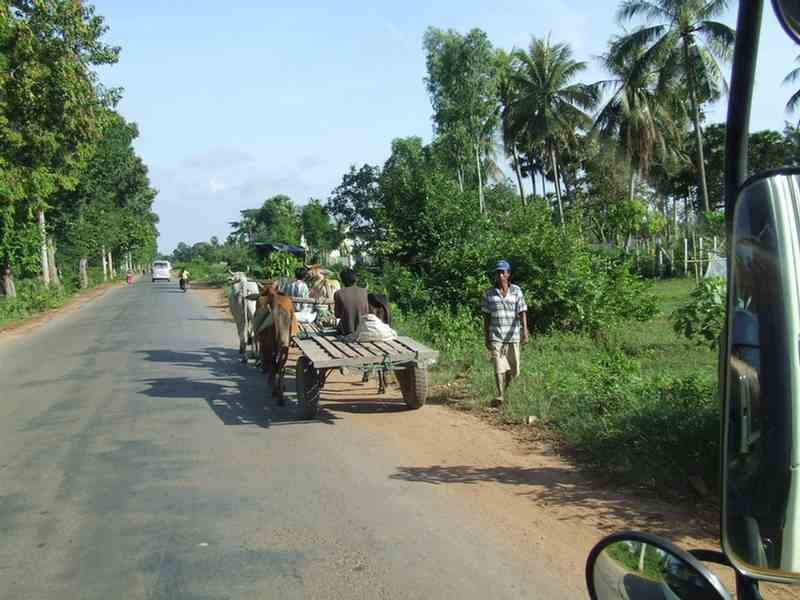
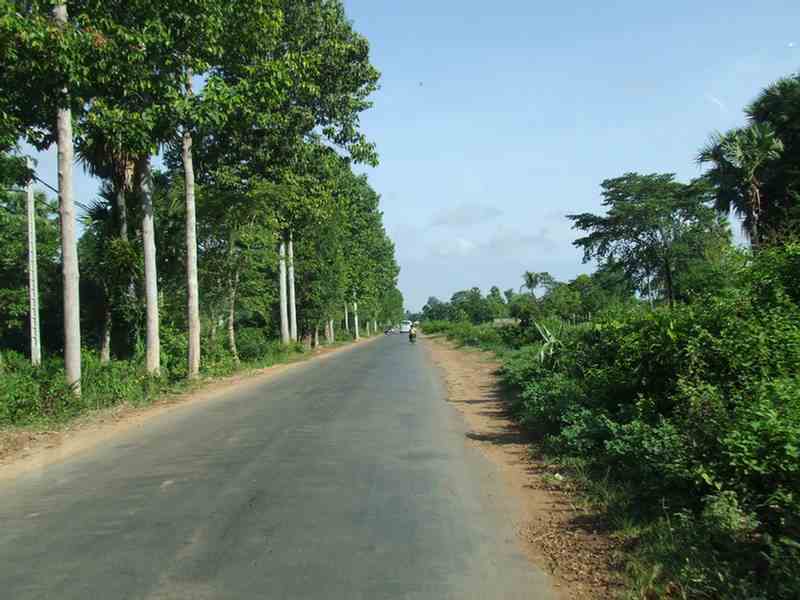
Our luggage was carried on a hand cart to cross over the border.

A cart load of buckets coming into Cambodia
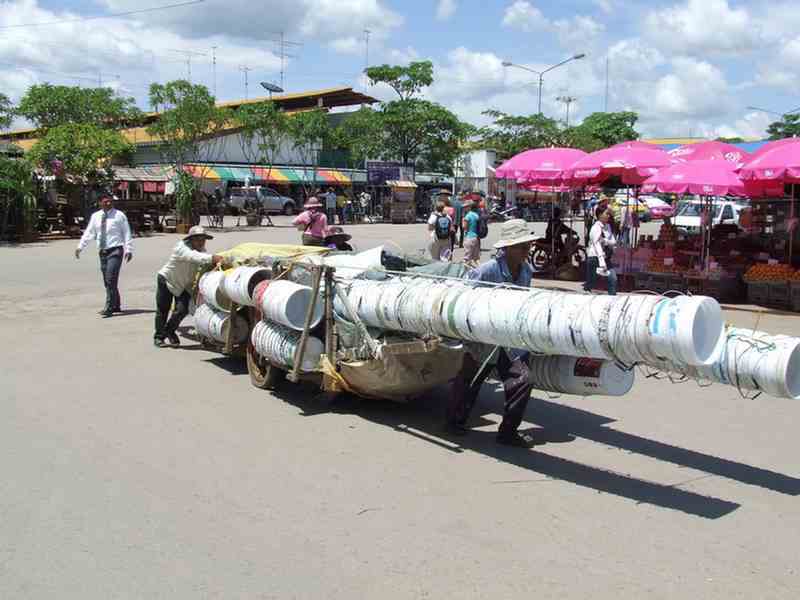
A cart load of buckets coming into Cambodia

In Indochina they drive on the right hand side of the road.
Once into Thailand it is back on the left hand side of the road and as well the roads are much better,
so it was an easy quick trip to Bangkok.